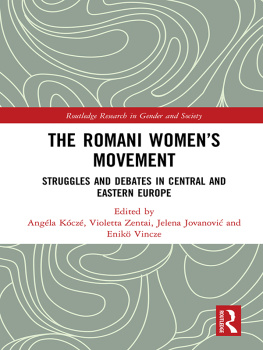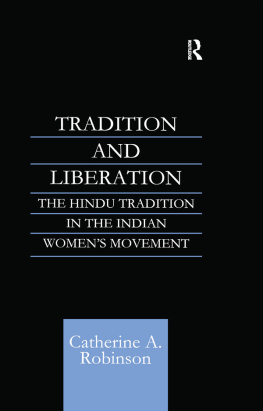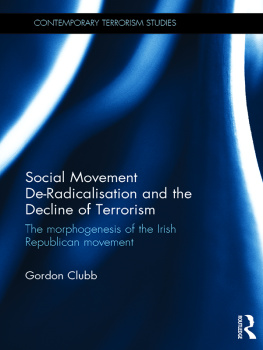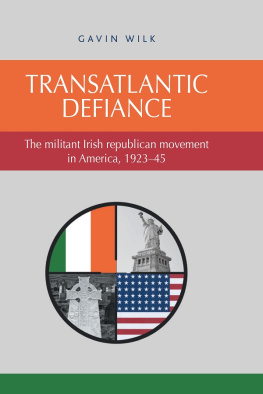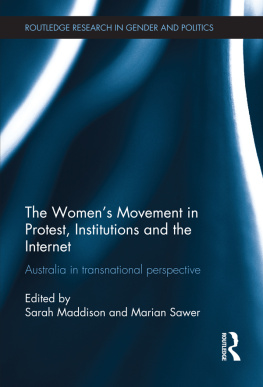WOMEN AND THE
IRISH REVOLUTION
Women and the
Irish Revolution
FEMINISM, ACTIVISM, VIOLENCE
E DITED BY
LINDA CONNOLLY
First published in 2020 by
Irish Academic Press
10 Georges Street
Newbridge
Co. Kildare
Ireland
www.iap.ie
Linda Connolly and the contributors, 2020
978-1-78855-153-3 (Paper)
978-1-78855-154-0 (Kindle)
978-1-78855-155-7 (Epub)
978-1-78855-156-4 (PDF)
A CIP catalogue record for this book is
available from the British Library.
All rights reserved. No part of this publication may be
reproduced, stored in a retrieval system, or transmitted, in any
form or by any means (electronic, mechanical, photocopying,
recording
or otherwise) without the prior written permission of both
the copyright owner and the publisher of this book.
Typeset in Minion Pro 11/14 pt
Front cover: Jack B. Yeats, Communicating With
Prisoners ( c. 1924) Estate of Jack B. Yeats, DACS
London/IVARO Dublin, 2020
Back cover: The Commissiart of Cumann na mBan
(Courtesy of Cork Public Museum, Conlon Collection)
Cover design by RiverDesignBooks.com
Merrion Press is a member of Publishing Ireland.
CONTENTS
ACKNOWLEDGEMENTS
T he genesis of this collection was a public conference held in the Royal Irish Academy, Dublin on 1st September 2017, and a project which was funded by an award from the Irish Research Council, New Foundations (Decade of Centenaries) scheme. The Irish Research Council is an essential resource for achieving research excellence in Ireland and I am grateful for this essential support. My colleagues in the Maynooth University Social Sciences Institute, especially Orla Dunne, Anne Hamilton-Black and Rhona Bradshaw, as always assisted me in hosting the conference and in completing the project. I am fortunate to work in a collegial and dynamic research environment at Maynooth University.
All of the contributors to the conference and to this collection are to be commended for undertaking and producing such detailed research on womens lives and experience of revolution. Sincere thanks are also due to Jennika Baines of Indiana University Press, Dr Oona Frawley and Professor Guy Beiner for their support in completing this book and to two anonymous reviewers for very useful and positive feedback on the manuscript. I am particularly grateful to Conor Graham of Irish Academic Press for publishing this book bang in the middle of the COVID-19 pandemic and to Patrick ODonoghue for his outstanding editorial support.
I am indebted to Dr Andy Bielenberg, Dr John Borgonovo, Dr Marie Coleman, Dr Pdraig Yeates, Dr John Dorney, Aaron Maonaoigh, Dr Sen William Gannon and Dr Pdraig g Ruairc for suggesting archival sources and sharing information, at different stages. Liz Gillis contributed an insightful preface to the collection. In addition, Eleanor Hooker and Doireann N Ghrofa, at different stages, both provided encouragement and wrote powerful, evocative poetry. Thank you all for your support and solidarity.
The journey Edel Doherty, Frank Fagan and I undertook in securing an Irish Military Archives file documenting the shameful attack of Maggie Doherty on 27 May 1923 has been a huge inspiration. We hope she and other unspoken women will be remembered during the commemoration of the Irish Civil War in 2022 alongside other victims.
A number of speaking invitations afforded me opportunities between 2016 and 2020 to test out some of the key ideas underpinning my research on women, violence and the Irish revolution, in the best of places and always in excellent company. Sincere thanks to Dr John Borgonovo (UCC Decade of Centenaries Lecture Series), the West Cork History Festival (Simon and Victoria Kingston, and Bishop Paul Colton), the John Hewitt Summer School (Dr Myrtle Hill), the late Professor David Fitzpatrick, Dr Fionnuala Walsh and the TCD Long Room Hub on the occasion of Davids retirement, File an Phobail (Professor Bill Rolston), Wexford Public Library, NUIG Irish Centre for the Histories of Labour and Class (Dr Sarah-Anne Buckley and Dr John Cunningham), the National Museum of Ireland (Collins Barracks, Helen Beaumont and Diarmaid Bolger), the National University of Ireland (Dr Emer Purcell and Dr Attracta Halpin), Glasnevin Museum (Georgina Laragy) and the National Library of Ireland (Brd OSullivan).
As always, it is the help and support of my much-loved family especially Andy, Benjamin, Rosa and Emily Mary Bielenberg that has enabled me to publish a new book in the midst of our otherwise busy life together and during the unanticipated pressure caused by the COVID-19 lockdown period of 2020. Mle buochas agus gr mr. N Saoirse go Saoirse na mBan .
Note: the contents of this book should not be used in any media outputs, documentaries, artistic or fictional work without the knowledge or consent of the authors who spent long periods researching, writing and editing their contribution to this book.
Professor Linda Connolly
Mount Leinster, August 2020
PREFACE
W hat did the Women do anyway? Lil Conlon felt so strongly about this statement that she decided to put on record exactly what the women of Ireland did during the Irish revolution. Conlon was a founding member of Cumann na mBan in Cork and was an active participant during the years 191423. She had expected a book to be written about the womens role in the revolution to coincide with the fiftieth anniversary of the Easter Rising. As she stated:
The Executive [of Cumann na mBan] were in a position to undertake such a work, as all Branches throughout the country submitted monthly reports dealing with activities, etc., and their Organisers furnished them with complete surveys from the Provinces. They had the rein in their hands.
Conlon took it upon herself to write the story and her book Cumann na mBan and the Women of Ireland 191325 was published in 1969. This was a fitting time as it was the fiftieth anniversary of the beginning of the War of Independence, a fact that would not have been lost on Conlon.
And while books had been written about women and the Irish revolution as early as 1922, they were books focusing on individuals. No one had written the story of what it was like for those women who were active, what they did, how they felt and what effect the conflict had on them. More importantly no one had written of the experiences of those who were not involved, the women who witnessed the events, who experienced the revolution from a different perspective. Conlon changed that. As she claimed, This book does not purport to be a history it is simply a pot-pourri of bitter-sweet memories culled in the garden of Yester-Year. But it was a start.
Others followed Conlons lead. Historians such as Dr Margaret MacCurtain and Dr Margaret Ward blazed a trail in bringing forth the womens experience of the revolution. Since their pioneering work, more and more historians have followed in the footsteps of MacCurtain and Ward, bringing to life an aspect of the Irish revolution that had been cast to one side.
The task of discovering the stories of the women has been made so much easier in recent years thanks to the release of new material from archives across the country, most notably the Military Archives in Dublin. The Military Service Pension Collection is the gift that keeps on giving. These files, which were never intended for public release, are revealing so much about the activities of Cumann na mBan and more importantly the personal impact the revolution had on women.



